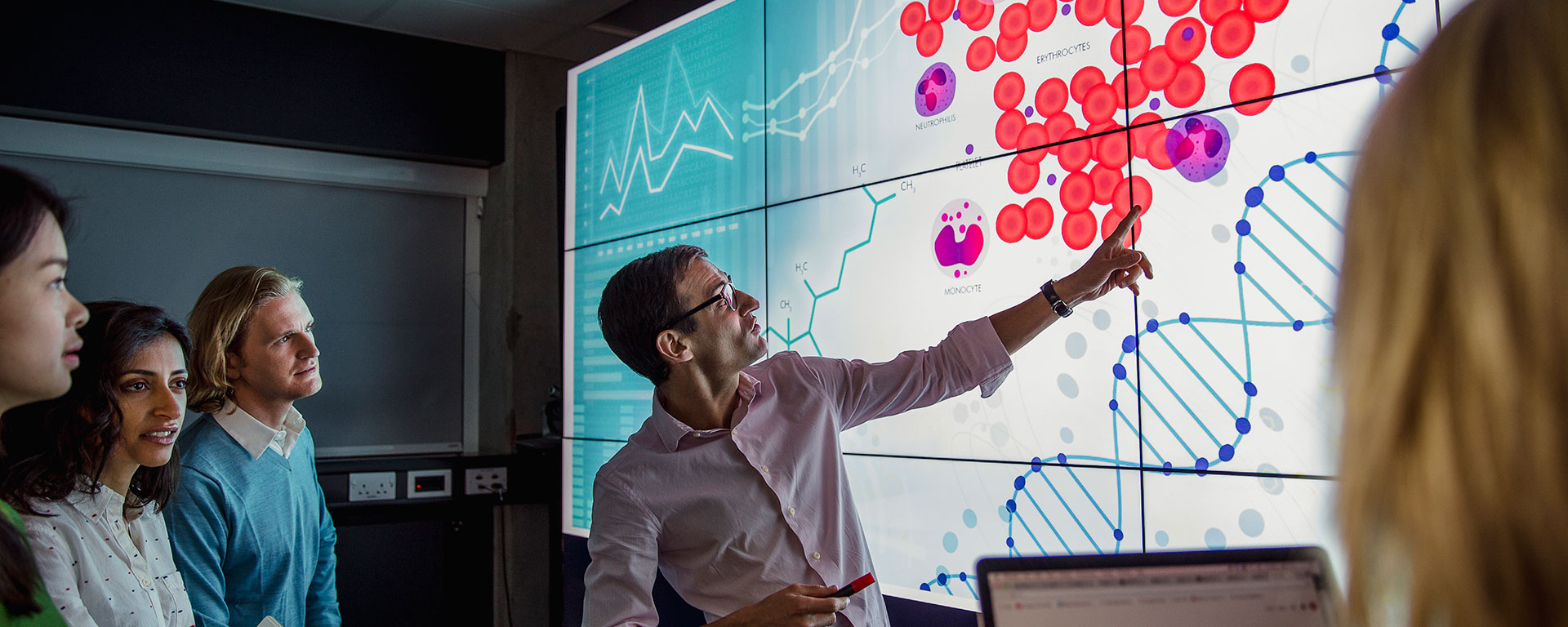The 6-Minute Rule for Bioinformatics Tutor
The 6-Minute Rule for Bioinformatics Tutor
Blog Article
Unknown Facts About Bioinformatics Tutor
Table of ContentsUnknown Facts About Bioinformatics TutorBioinformatics Tutor for DummiesHow Bioinformatics Tutor can Save You Time, Stress, and Money.Bioinformatics Tutor - The FactsSome Known Questions About Bioinformatics Tutor.
Of the total individuals associated with the training, 80% were students from public greater education and learning establishments, while the continuing to be 20% originated from private establishments. To receive a certificate of involvement, pupils were required to go to a minimum of 90% of the overall training hours. As an outcome of this need, an excellent 95% of the participants effectively obtained their certifications, having not only satisfied the minimum participation standards but also completed all assigned tasks throughout the training.
Throughout the elevation of the COVID-19 pandemic, particularly between June and August 2020, the job group was charged with arranging specialized training in bioinformatics. This training was specifically focused on students from the research team Core for Study in Applied Computing at the Federal College of Pará (UFRA) The adaptation to remote learning platforms due to the pandemic produced a possibility to explore new mentor methods and digital tools that enhanced both reach and effectiveness.
To reply to the expanding demand in the computer and life scientific researches areas, an innovative course was presented in 2020 entitled Introduction to Artificial intelligence. This training course was developed to offer an obtainable yet extensive review of Expert system strategies, especially as applied in bioinformatics. The program was executed over three months, from October to December 2020, and was supplied entirely online through the Google Meet system. This virtual style made it possible for participation from trainees across Brazil, most of whom may not have had the possibility to go to in-person sessions.
Not known Details About Bioinformatics Tutor
A noteworthy feature of this program was its emphasis on hands-on discovering. Roughly 50% of the complete training hours were committed to sensible activities where students constructed smart versions and applications in a series of scientific domain names, consisting of genetics, molecular biology, and ecological data evaluation. Extensively utilized devices and structures such as Spyder, Google Colab, Jupyter Notebooks, and Orange were incorporated into the coursework. These platforms enabled trainees to take part in real-time information adjustment, version training, and formula experimentation.
The program attracted 80 individuals in total amount. Sixty of them were affiliated with different higher education and learning institutions in the state of Pará, while the continuing to be twenty originated from organizations located in 5 other Brazilian states. This wide geographical representation highlighted the nationwide interest in bioinformatics and the growing demand for specialized skills around. By introducing Expert system in a relevant and sensible context, the campaign offered to connect the void in between concept and real-world application, supplying students with a strong foundation for future study or employment in the area.
The training campaign formed part of a more comprehensive scholastic outreach useful link initiative called the Bioinformatics when traveling project. This job has, for many years, introduced loads of students to the world of bioinformatics and computational biology. The occasions held under this umbrella campaign have actually taken area throughout several regions and years, as summed up in Table 1 (List of events, locations, years, and overall numbers of pupils and trainers)
Several of these groups, at first brought with each other by their engagement in training events, have because gone on to create independent clinical research in partnership with neighborhood academic institutions. The training not just cultivated clinical reasoning within the context of bioinformatics however additionally sparked joint relationships that prolonged past the training atmosphere.
Bioinformatics Tutor Fundamentals Explained
The project itself was conceived and organized by megabytes and RR, that supervised the planning and implementation of each step. Lectures were provided by a multidisciplinary group containing megabytes, FA, EF, KP, JS, DM, SN, LP, LG, IH, rr, and ac. The same group, leaving out IH and RR, likewise worked as tutors for the sensible training modules. Funding for the project was given through the grant 88887.200562/ 2018-00 from CAPES. The writers extend their gratefulness to every person who added to the awareness of this project, whether directly or indirectly, because its creation.
The Federal College of Pará's Office of Research (PROPESP/UFPA) likewise gave financial backing, specifically for the production of the last manuscript. The writers proclaim no industrial or economic disputes of interest that could have influenced the research study. Furthermore, all interpretations and opinions expressed in this article are exclusively those of the writers and do not necessarily show those of their respective establishments, the publisher, editors, or reviewers included in the publication process.

Our Bioinformatics Tutor PDFs
From an instructional perspective, the teaching technique utilized in the training was purposefully interactive. Courses were performed in a way that encouraged pupil participation and conversation, exceeding memorizing memorization to explore just how ideas are developed, used in day-to-day live, and examined in scholastic setups. The instructional ideology focused on nurturing both solid and battling trainees, supplying personalized assistance, and structure confidence via sustained mentorship and perseverance.

Each group, containing about 36 participants, was supported by three mentors-- most of whom were postdoctoral scientists with specialized experience. These mentors not just aided develop the team jobs but also promoted their execution, making sure that each research study concern was both appropriately challenging and appropriate. The objective was to give a biologically sensible context that individuals might explore via open-ended purposes and access to curated datasets.
For added understandings right into the methodology and results of this project-based understanding method, visitors are routed to S1 Text, which includes comprehensive descriptions of the instructional framework, evaluation techniques, and project styles made use of in the training sessions.
Unknown Facts About Bioinformatics Tutor
Of the total amount individuals involved in the training, 80% were pupils from public greater education establishments, while the staying 20% came from exclusive establishments. To certify for a certificate of participation, pupils were needed to participate in at least 90% of the total training hours. Significantly, beyond the pupils who enlisted in the training sessions, 7 seasoned teachers took part in supplying the training courses, while 3 specialized research study teachers worked with the overall training procedure. Approximately Read Full Report 50% of the total training hours were dedicated to useful activities where trainees developed intelligent models and applications in a range of scientific domain names, consisting of genetics, molecular biology, and environmental information evaluation. The training not just cultivated clinical reasoning within the context of bioinformatics but additionally stimulated collaborative relationships that prolonged past the training atmosphere.
Report this page